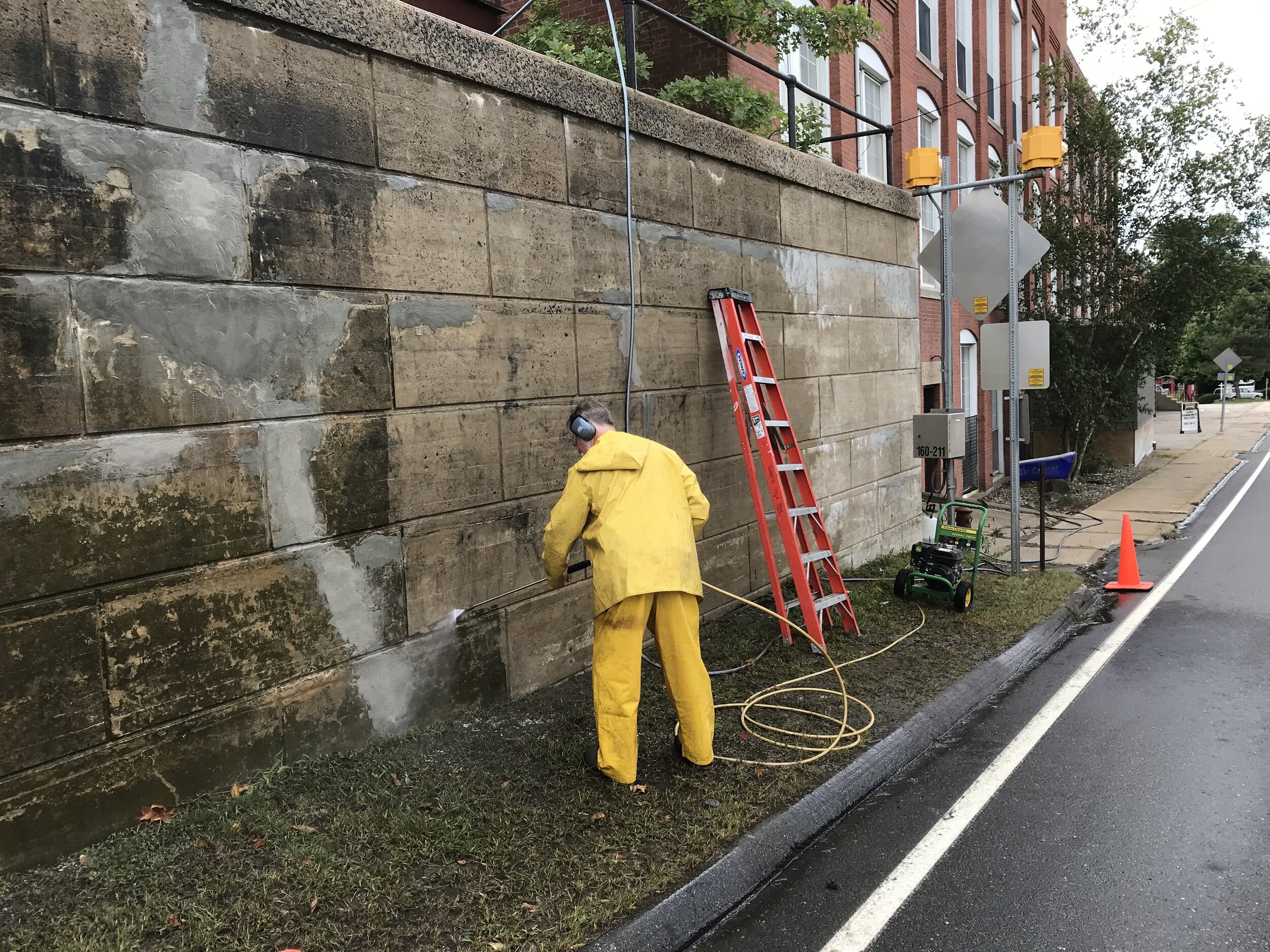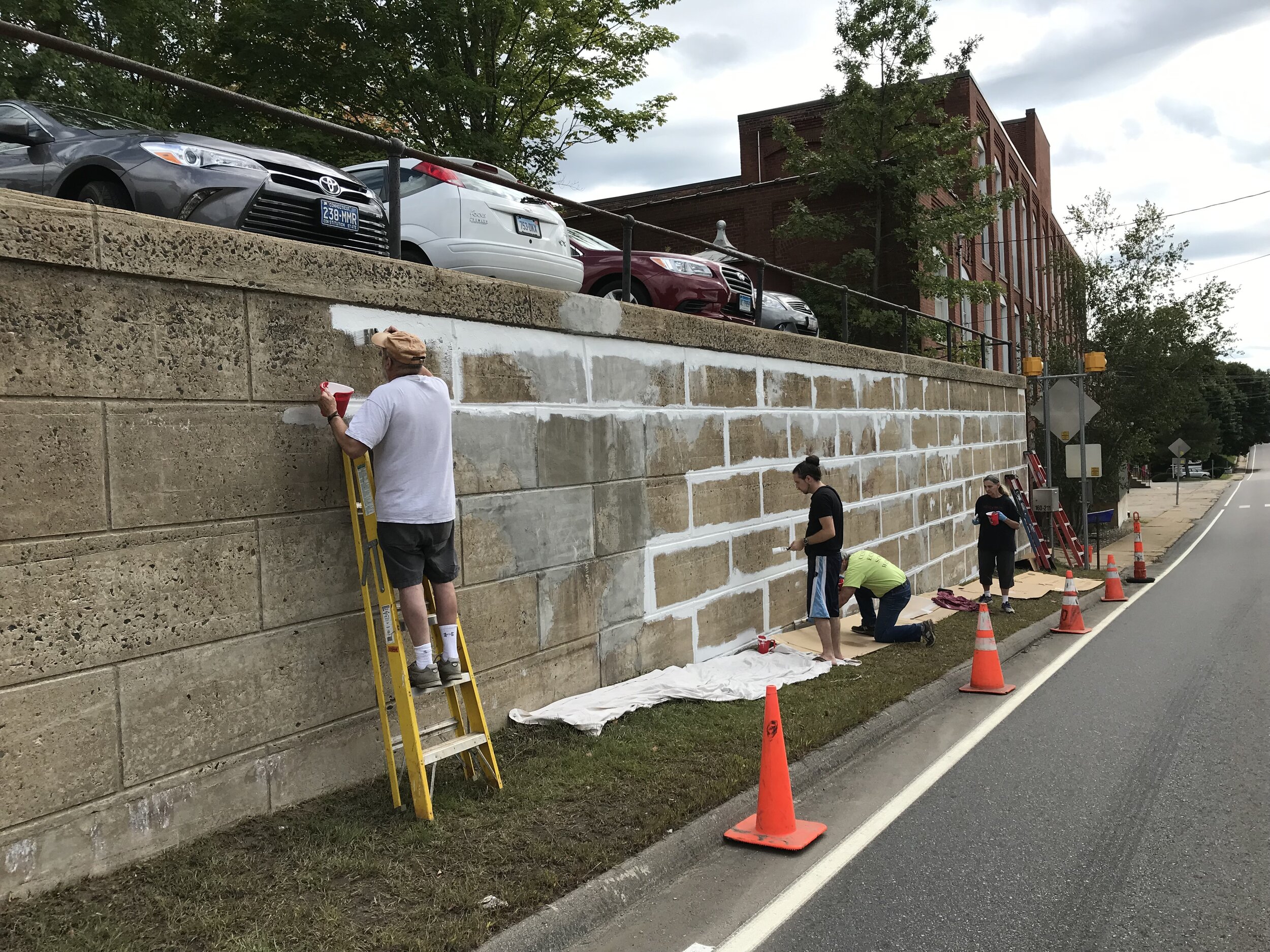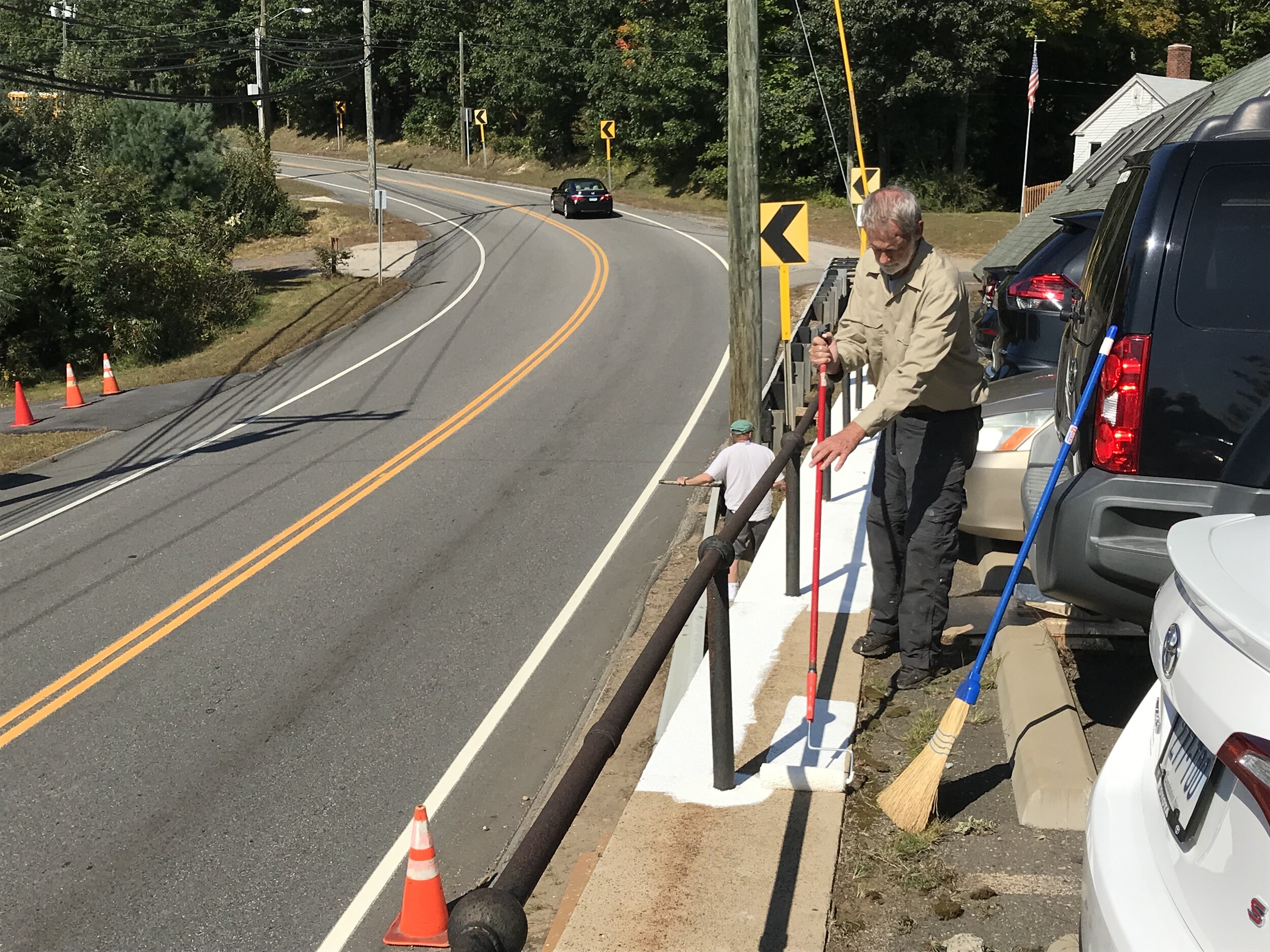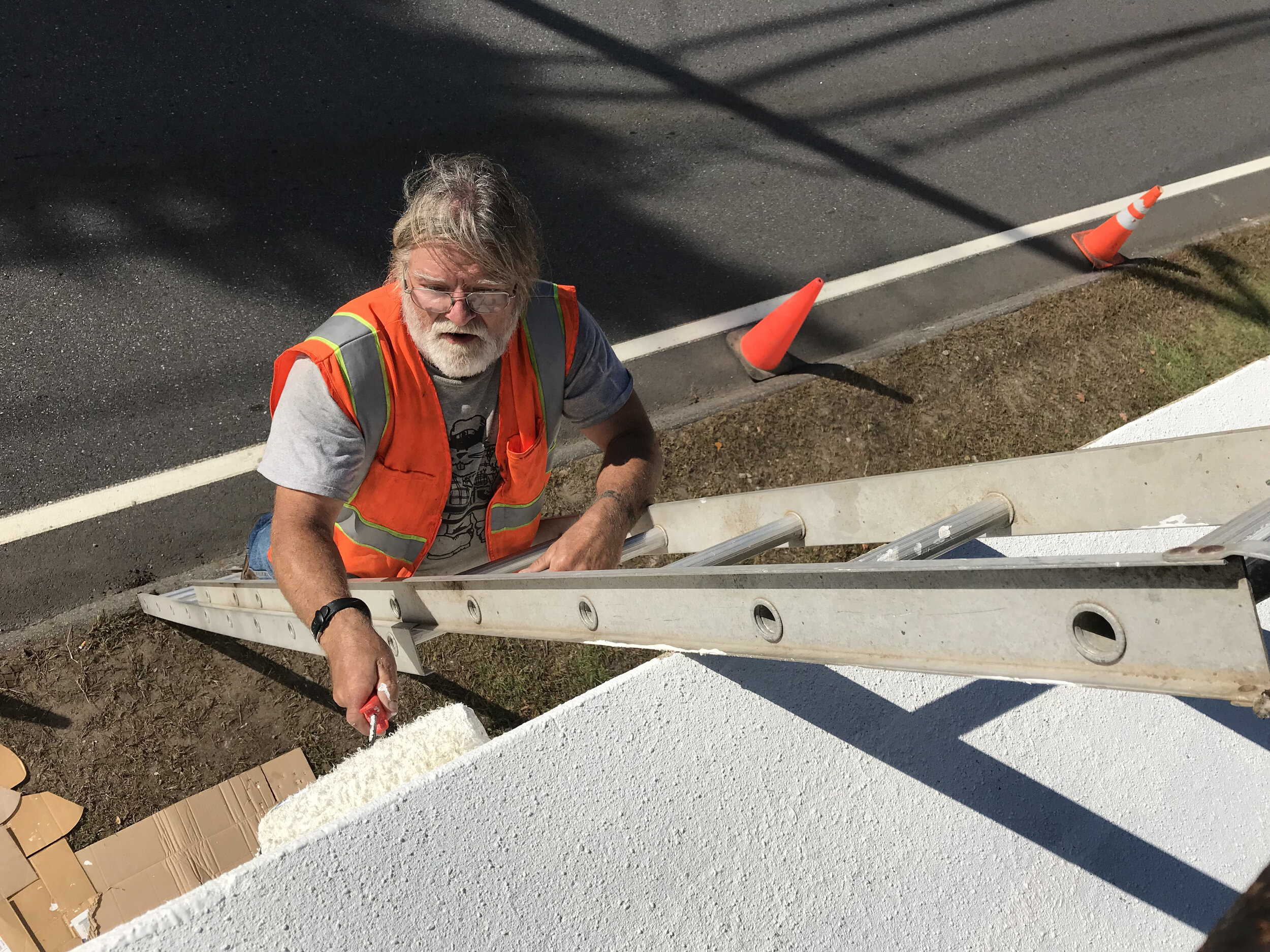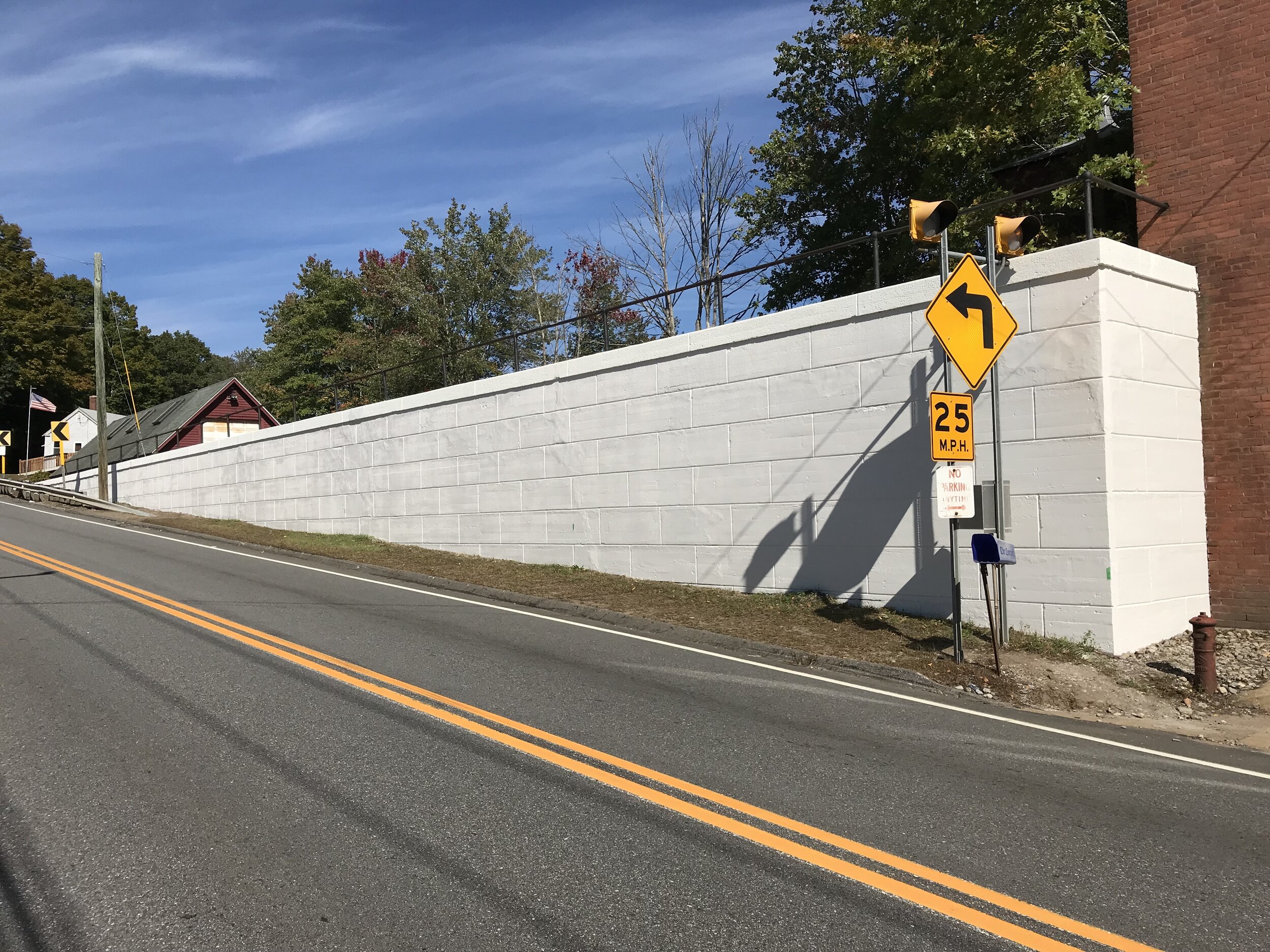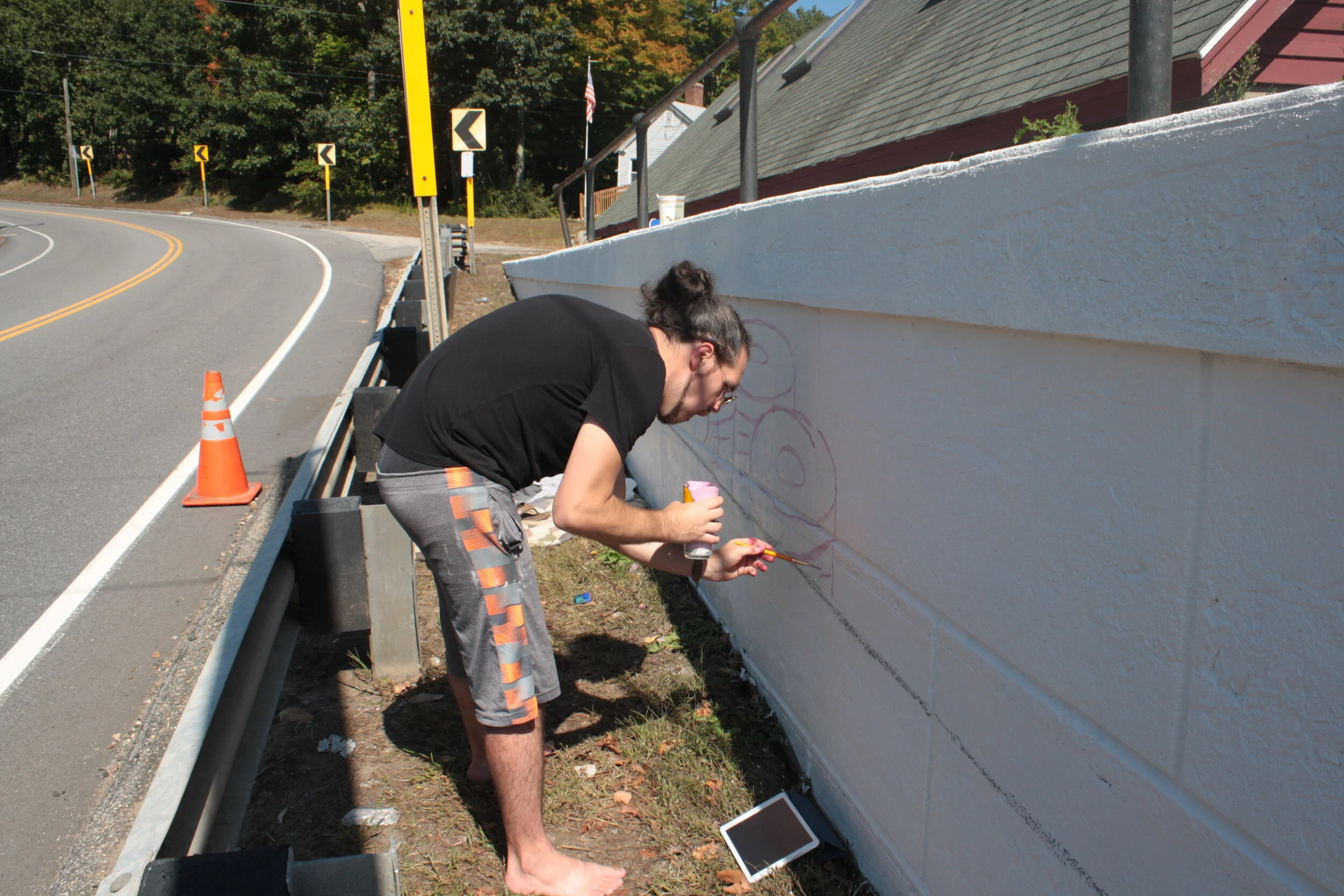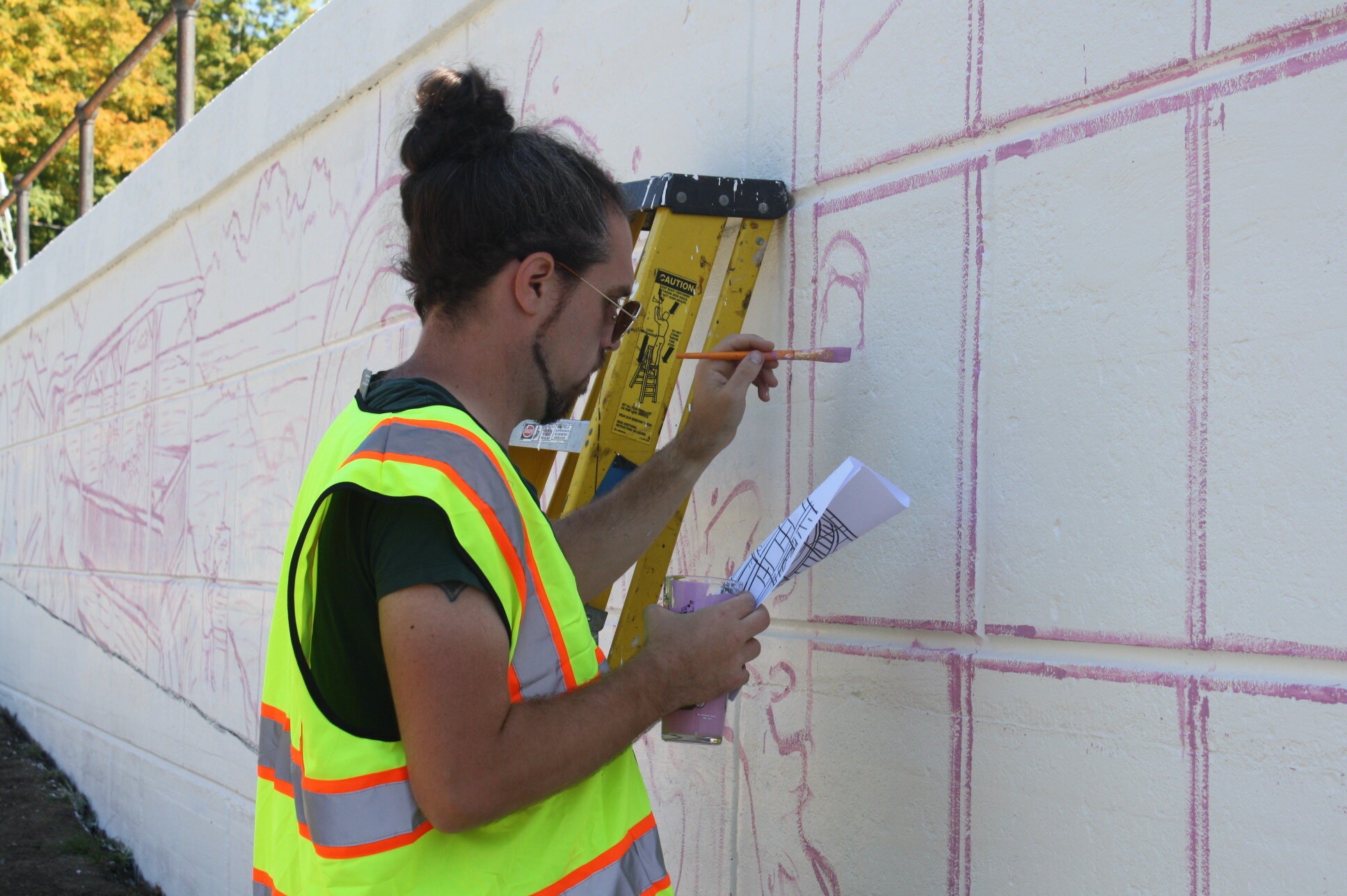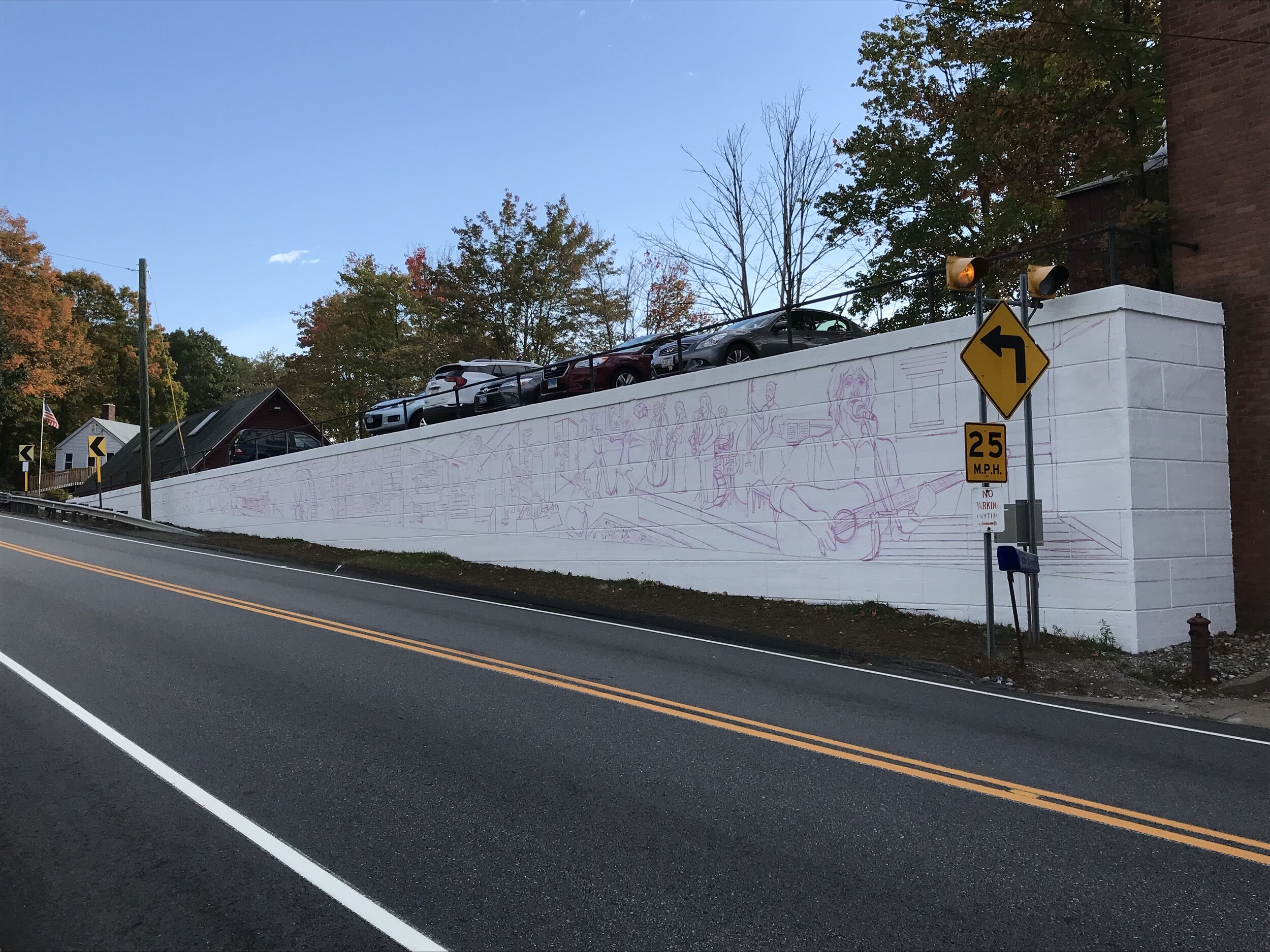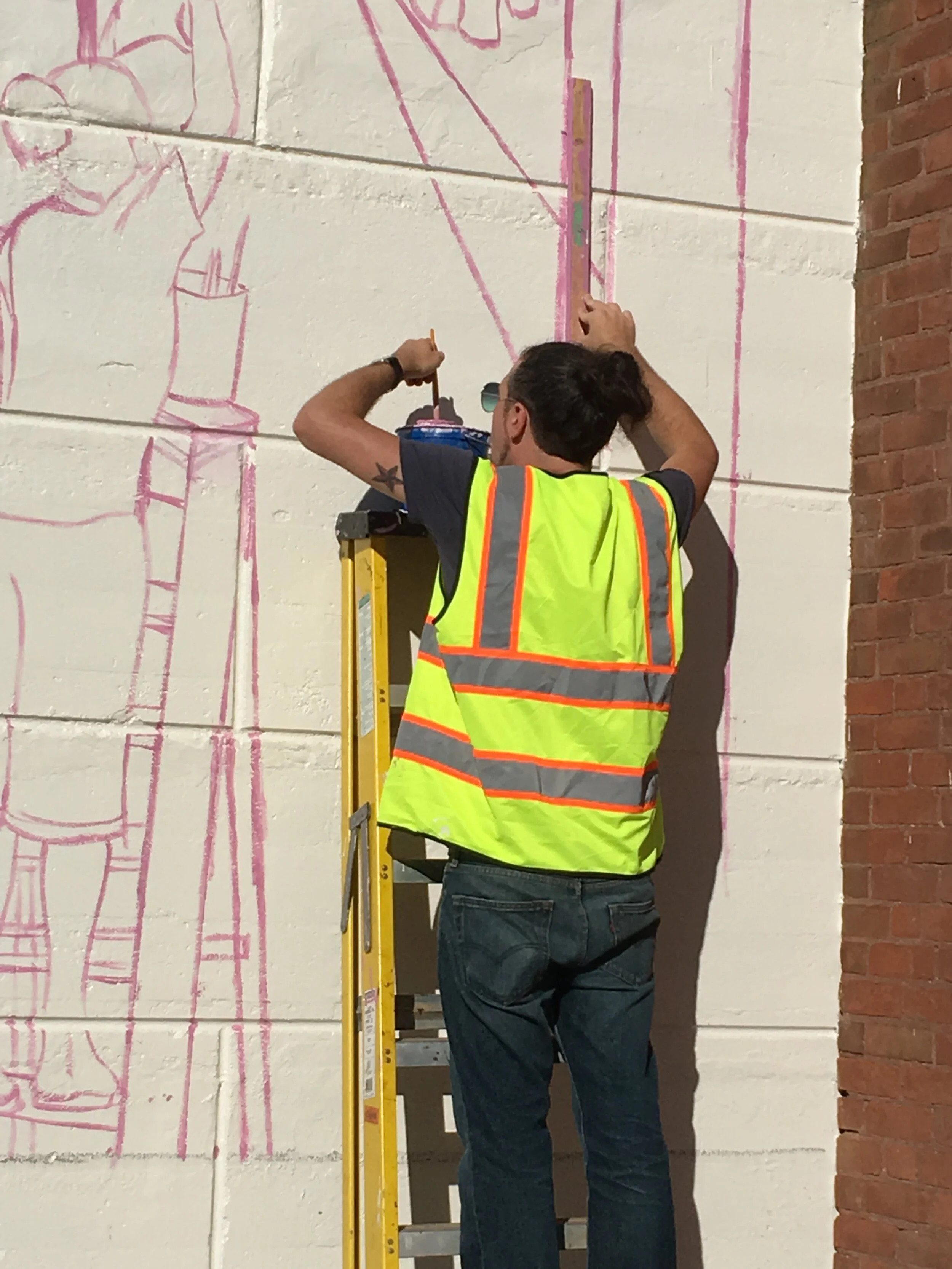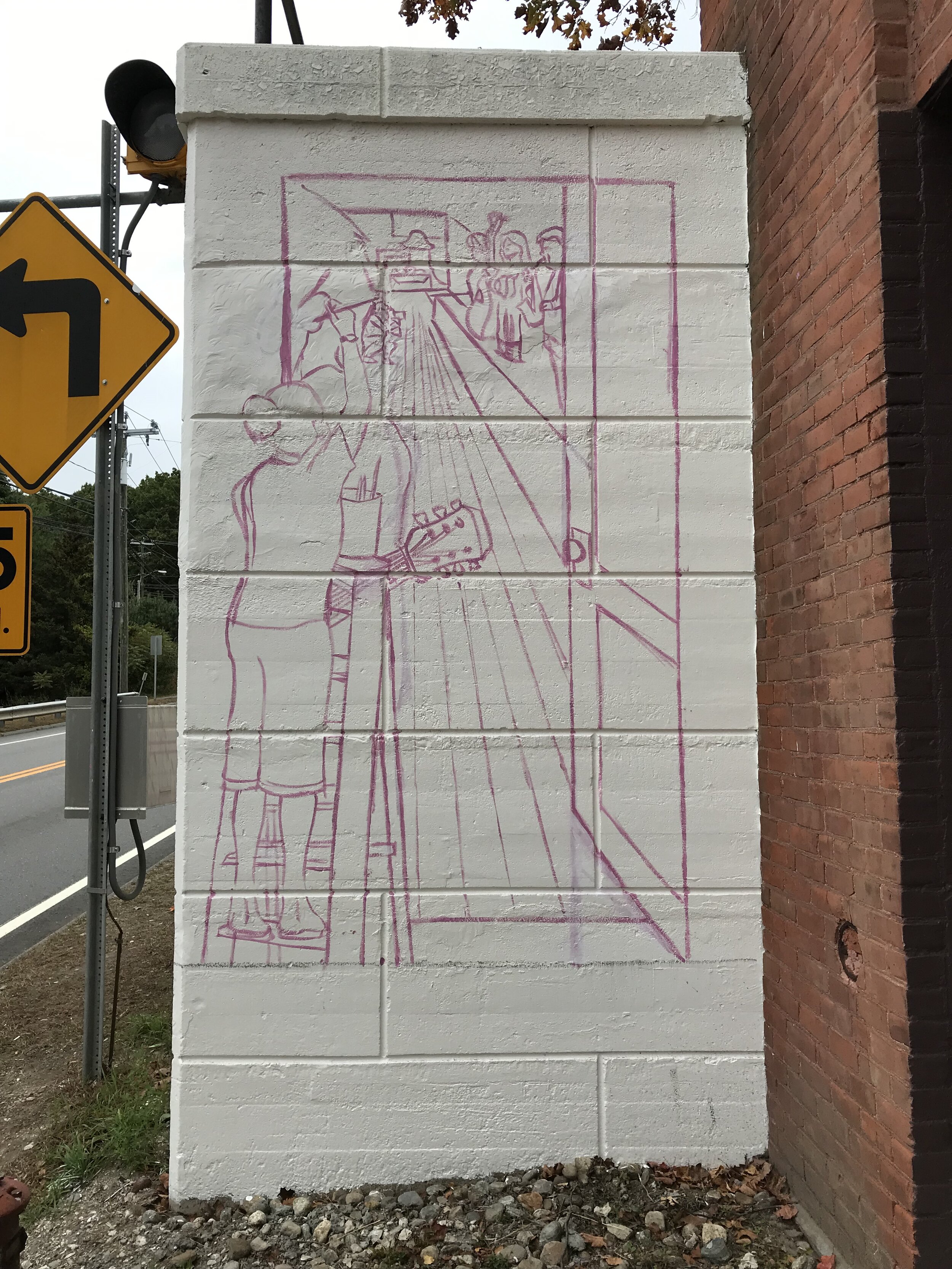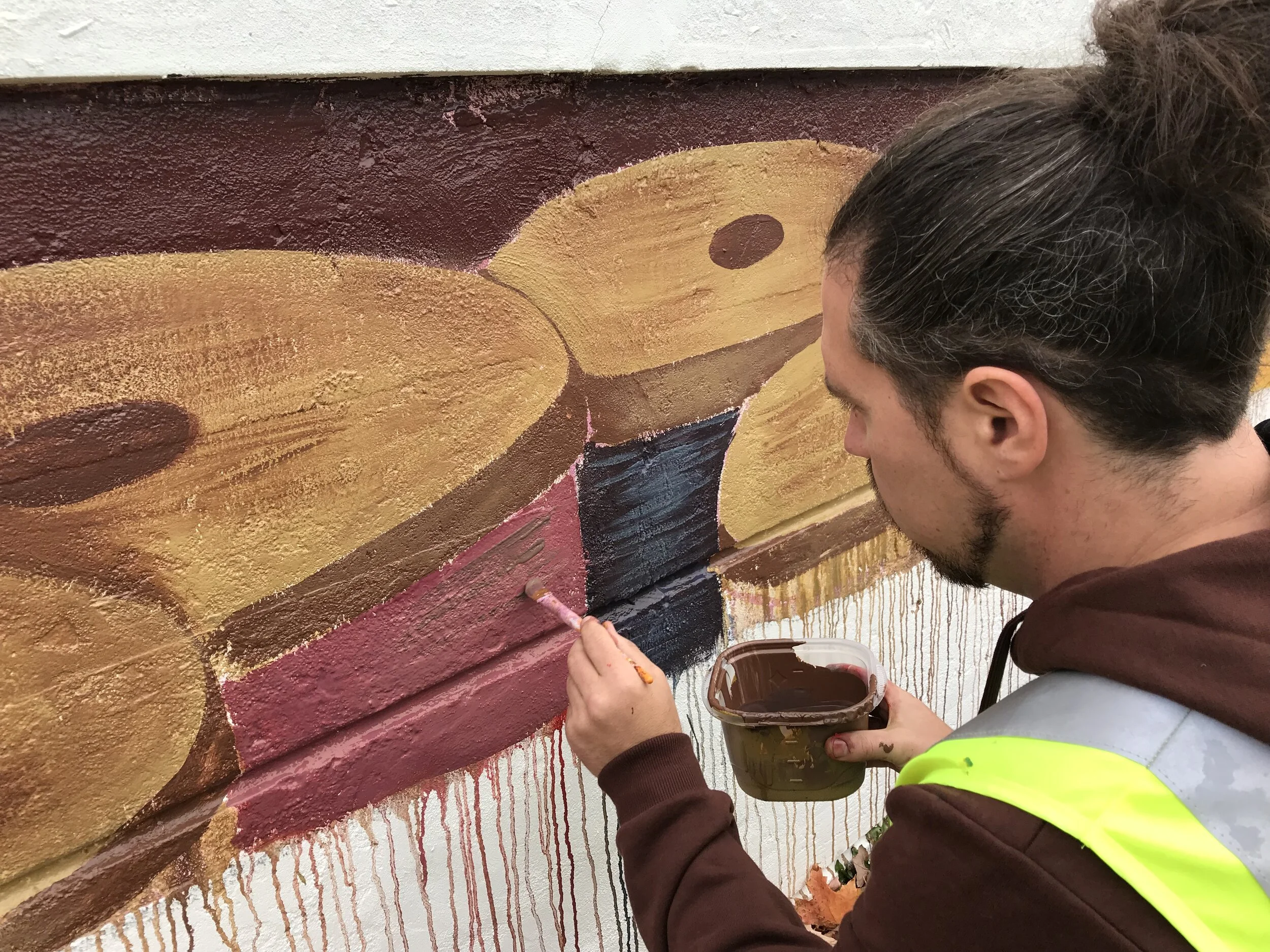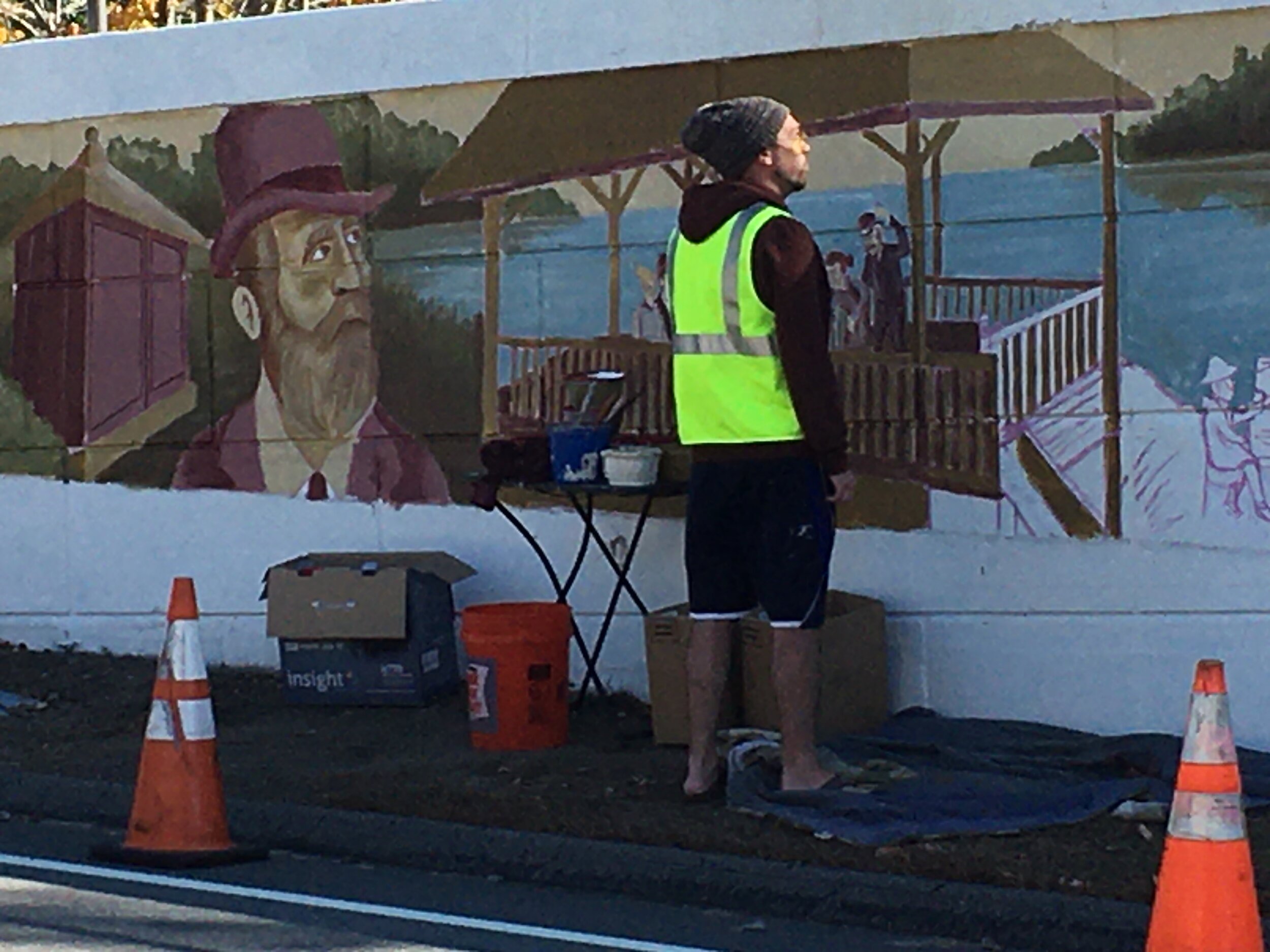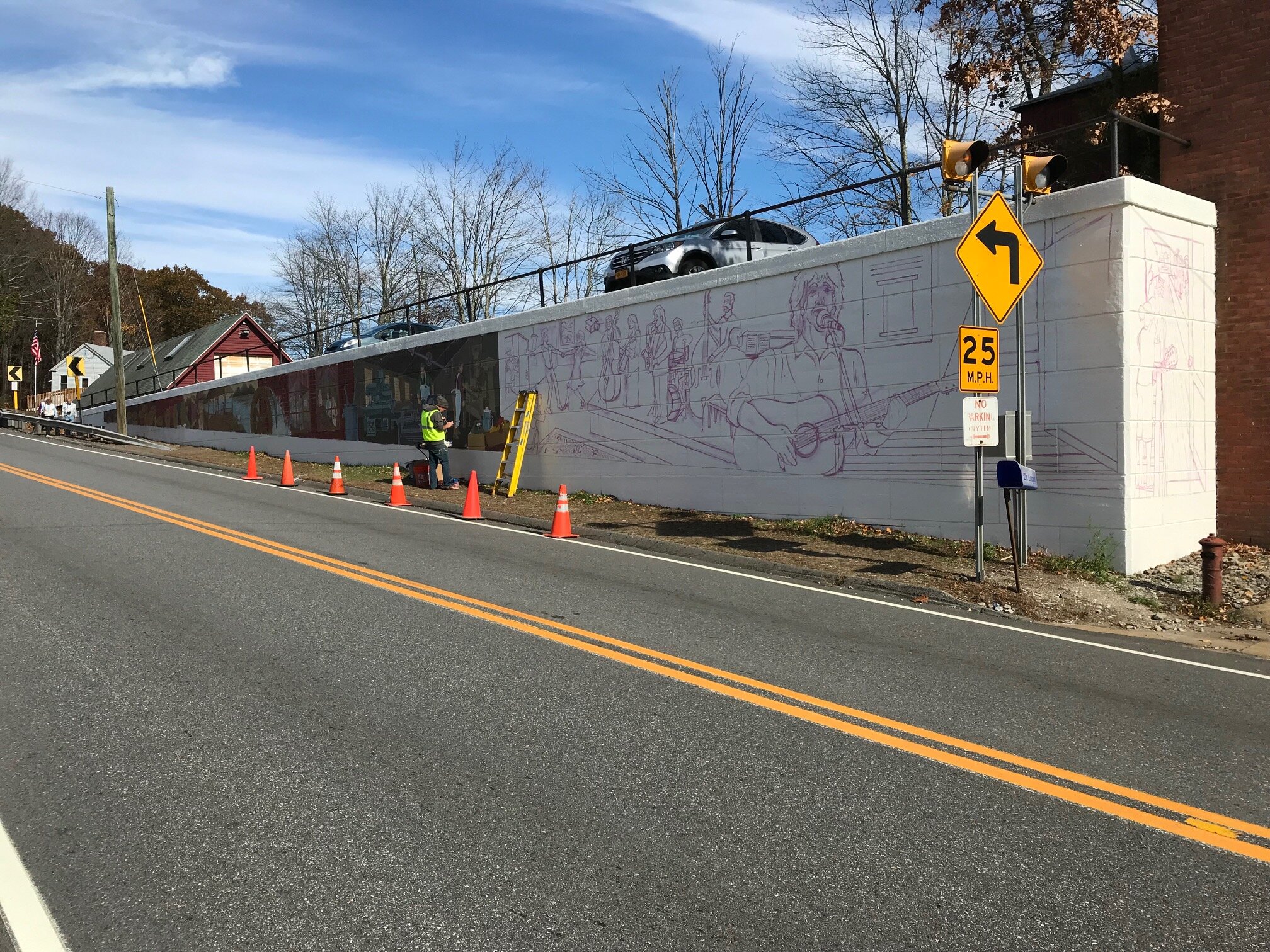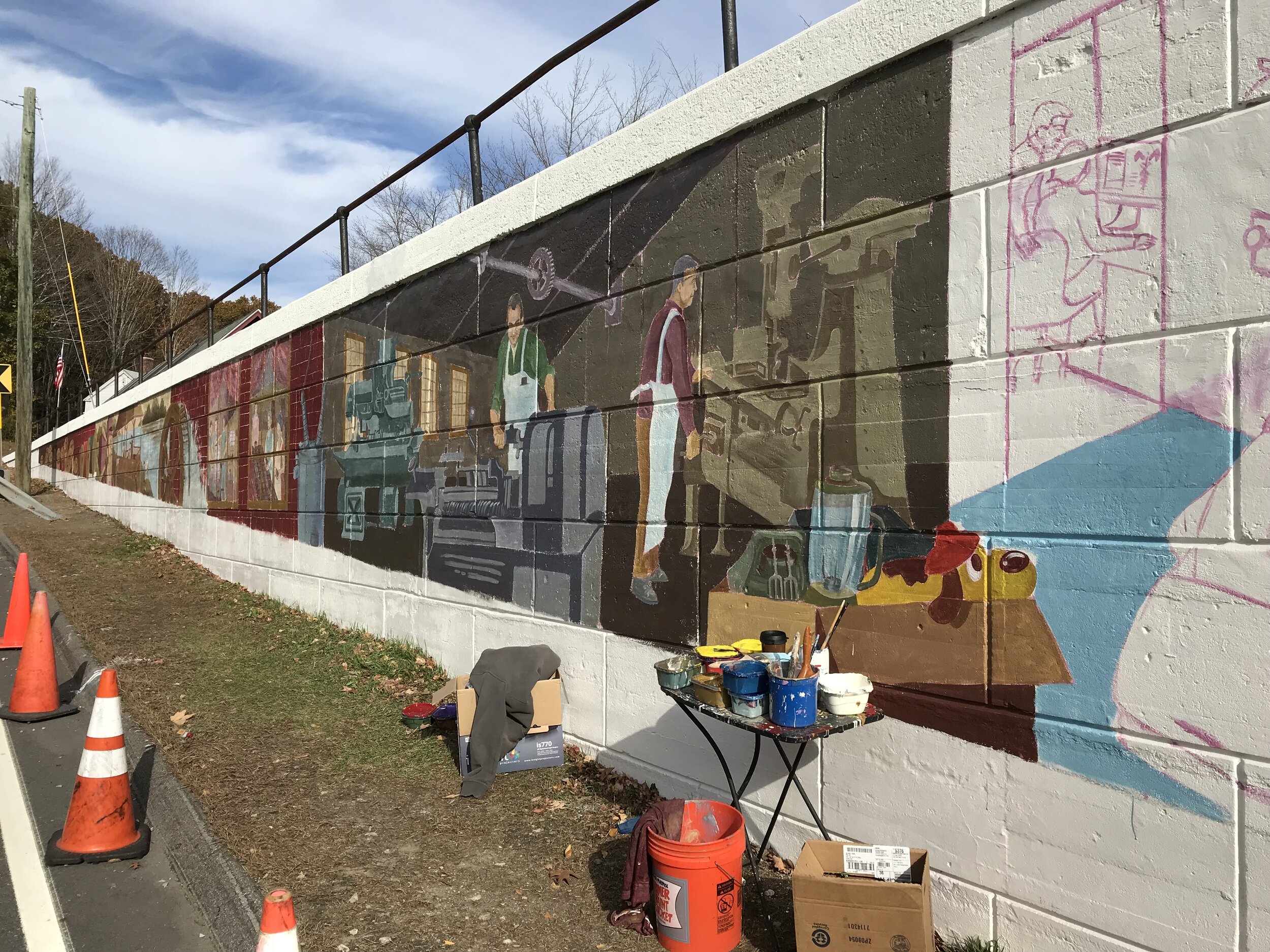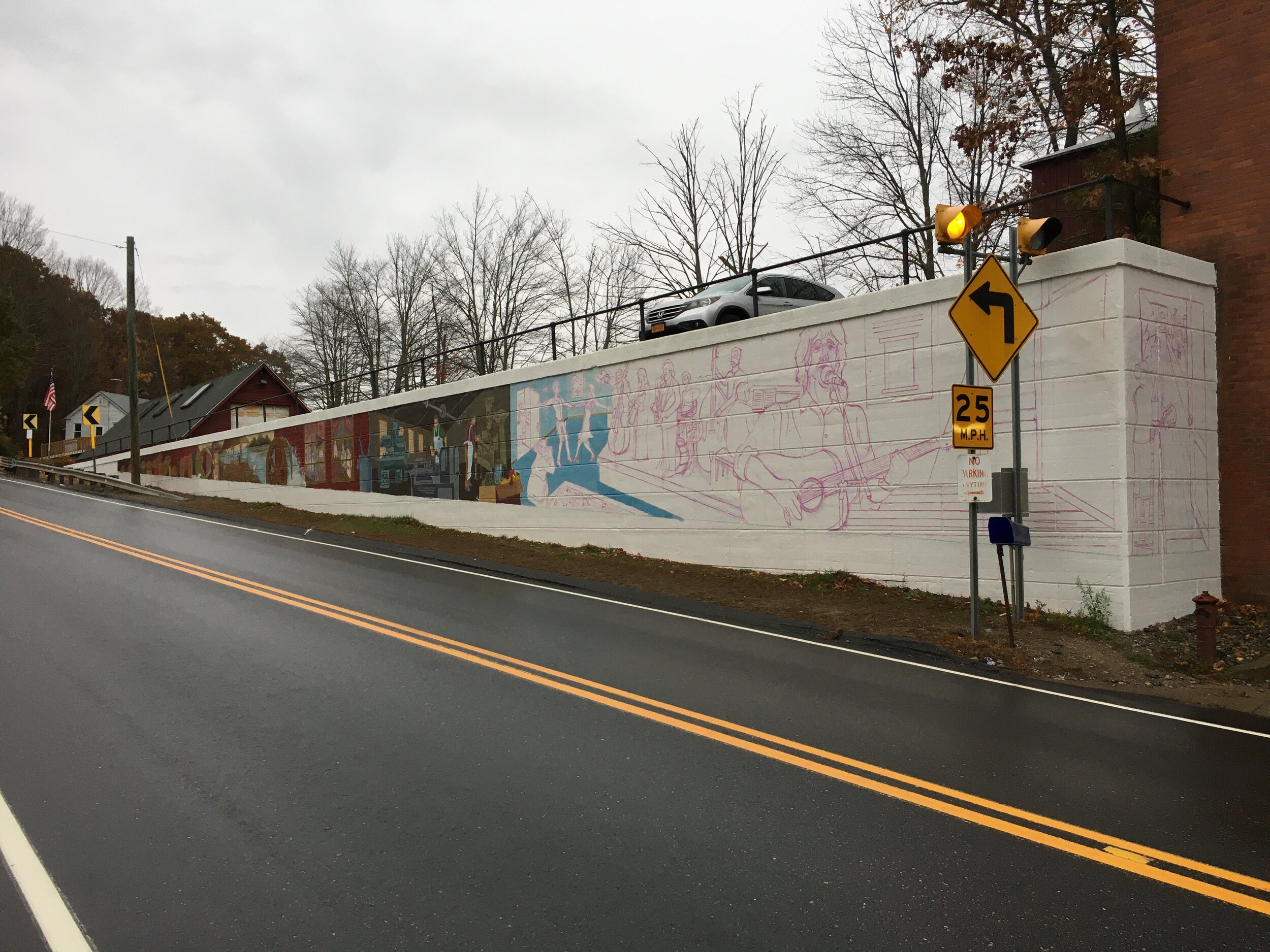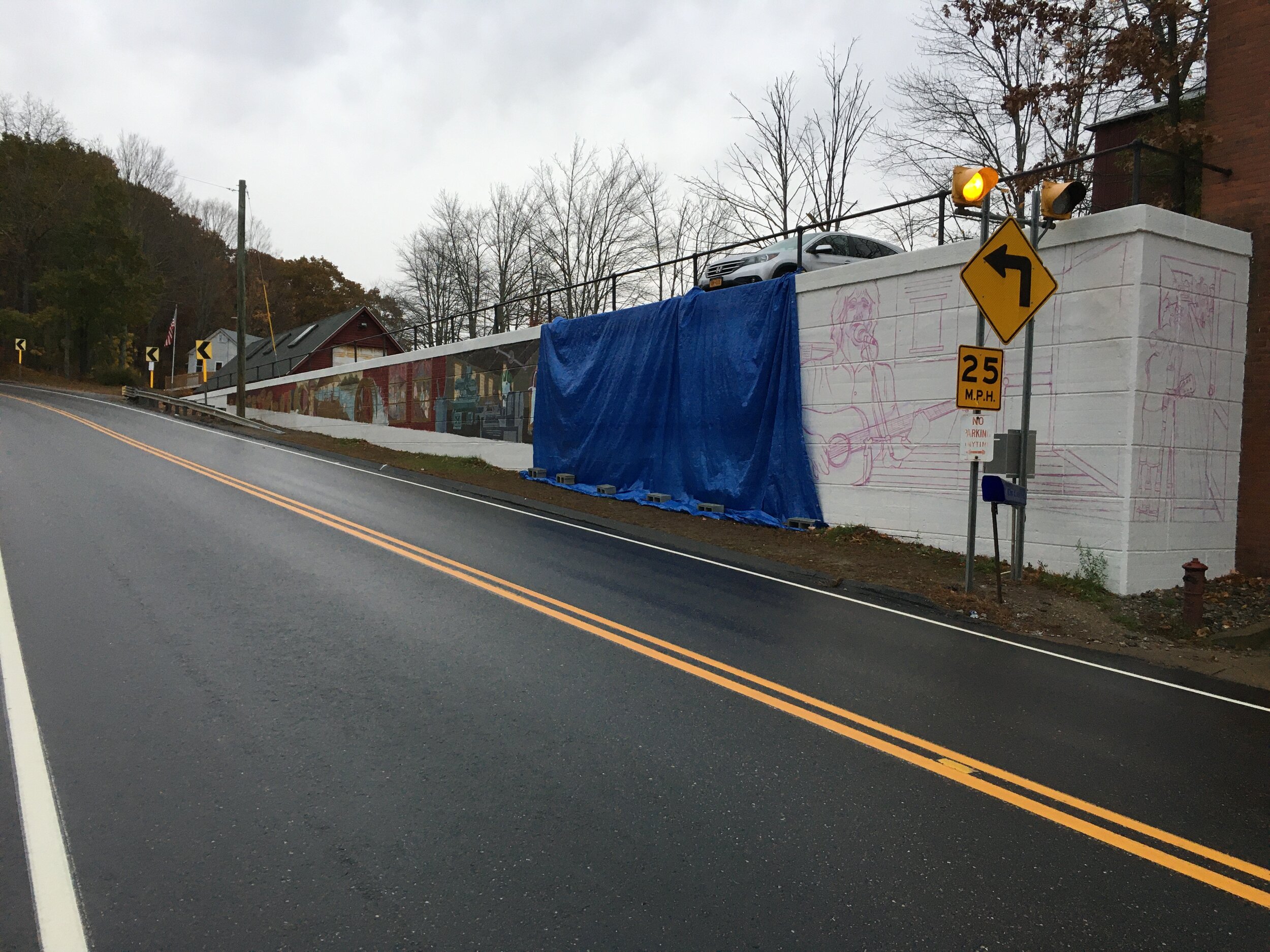A Canvas of History and Social Change
Public Dedication and Celebration - November 30, 2019
“A Canvas of History and Social Change” represents a public art project developed and executed by the Eastern Connecticut Center for History, Art, and Performance (EC-CHAP). EC-CHAP is a 501.c.3 cultural organization serving eastern Connecticut and beyond.
The purpose of this project is to raise awareness of local history, culture, and sustained innovation that has endured time and social change through mural art. The resulting mural has been created on a 200-foot retaining wall located on the east side of River Road (State Route-32) at The Mill Works, 156 River Road, Willington, CT. The mural was completed on November 23, 2019, followed by a public dedication and celebration on November 30, 2019. The mural artist responsible for presenting and finalizing concept designs and completing the final mural is Christopher Gunderson. Mr. Gunderson is a full-time graphic designer and visual artist.
This project was partially funded by a REGI grant administered by the Department of Economic and Community Development, Connecticut Office of the Arts. The remaining funds required to complete this project were acquired through a major fundraising activity - A Benefit Concert featuring Tom Rush and Matt Nakoa on April 13, 2019.
The Process:
After the notification of grant award, the process for this project entailed multiple elements including: planning, research, design, repair, material selection, scheduling, and execution over a period exceeding 12-months. A number of challenges surfaced over this period and continue to be present. These include retaining wall characteristics, harsh environmental conditions of the site, material selection, artist schedule, and weather. The general process elements are briefly described below.
Application for REGI Grant Submission to CT Office of the Arts (COA) June 20. 2018
Notification of REGI Grant Award by COA October 3, 2018
Retaining Wall Repair: Concrete contractor scheduled for October-November 2018. Schedule delays. Repairs planned for spring 2019.
Research and initial concept development finalized May 2019
A Community Engagement Team (CET) comprised of volunteers formed to review initial mural concept and provide input and feedback associated with content, historical significance, accuracy, and design. Members of the CET included: Mark Annuli, Arlene Avery, June Bisantz, Tom Buccino, Julie Engelke, Martha Ennis, Penny Guerin, Chris Gunderson, Tyler Hall, Paul Johnson, Ken Laster, Claire Laster, Arthur Rovozzo, Richard Symonds, and Karen Warner. The CET met on May 30, 2019 and June 6, 2019, with follow-up email exchanges and suggested revisions and interations.
Repairs to retaining wall completed June 2019
Site visits by paint material suppliers July and August 2019
Concept design finalized August 2019
Material selection finalized August 2019
Clean & power wash wall; prime & seal wall; and top coat wall completed September 2019. All work was performed by a Volunteer Team (VT). The VT included: Bill Briggs, Tom Buccino, Russ Darling, Julie Engelke, Jim Gagne, Larry Grasso, Chris Gunderson, Cindy Moeckel, and Dave Lebel
Sketch image on wall complete by artist September 2019
Colorize final image by artist completed November 23, 2019
Community Dedication Celebration of project November 30, 2019
The Mural:
The mural represents an historic journey illustrating the creativity and innovation that has transpired and evolved at the original Hall Thread Company facility, now The Mill Works, though time and change.
The Gardiner Hall Jr Company, first spooled thread manufacturing concern in the United States, produced fine threads from 1860 to 1954. The Town of Willington adopted the spool thread design as their corporate seal in 1919 (Town Meeting Records, III, December 22, 1919, p.371). This action was taken as a result of the significant impact the company and Hall family had in the early development of Willington, CT.
An assortment of brilliant colored spools begins the mural to the left. Select physical structures, either now gone or remain, are accurately depicted, including one of several hydrant houses, and the employee pavilion overlooking Lake Beauty (now Halls Pond).
Gardiner Hall Jr., the original founder of the company, was an inventor, innovator, and leader in the region and the state. He overlooks his pond and the transition of water power to electric power at his facility. Two windows in the mill allow the viewer to go back in time and experience the actual production operations in process. Through the first window, one looks into the Dye & Bleach House, where Francis Ladr and Erwin Sloetzer (foreman of the dyehouse) look on as John DiCicco wheels a cart of yarn away from a dying machine. Moving to the next window, Margaret Ladr, Alice Safranek, and Bertha Vonasek can be seen in the Packing Room, preparing a domestic shipment of spooled thread for distribution.
The period from 1955 to 1962 represents a period of Hall property acquisition, division, and sale by the New England Development Company. What follows is the transition from the textile industry to machine tool fabrication and high volume component production by the Andover Machine & Etching Company, a subsidiary of Willington Industries, Inc. The spirit of hard work, invention, and innovation by the Andover Machine Company continued through their operating years from 1962 to 1980.
The viewer is now standing on the 3rd floor of the original Hall Thread Company Packing & Shipping Building, now “The Packing House”. Here they see Tom Buccino at a lathe turning a metal component and Bill Sloan on a milling machine preparing another component part – both to be brought together and assembled into a die set for high volume punching on the floor below. To the left is a B&S automatic screw machine, which was to be located on the first floor of the Dye & Bleach House. To the lower right, is a box of assorted products including a Waring Blender, IONA hand mixer, and Hasbro “Digger Dog” children’s toy. Each of these finished products contains component parts produced on site by the Andover Machine & Etching Company.
From 1980 to 2010, a variety of manufacturing, commercial, retail, and creative individuals and concerns occupied the facility. It was in 1988 that the facility name “The Mill Works” was born, and The Mill Works LLC formally established in 2000. Though prior to what we consider an “incubator” model today, this period essentially represented just that – a group of small businesses, entrepreneurs, start-ups, and fine artists creating and innovating under one roof.
From 2010 to present day, The Mill Works has been reinvented once again. Listed on the Connecticut Register of Historic Places in 2014, and subsequent National listing in 2017, its historical roots are embraced and preserved.
The image now transitions further from traditional manufacturing to the high-tech digital world, represented by One Medical Passport (OMP), an innovative onsite leader in web-based medical software development and distribution. The viewer can peek into the office of a Senior Developer on the 3rd floor of the Dye & Bleach House collaborating with a colleague at a digital workstation.
The presence of arts and culture initiated by the Friends of The Mill Works during this period, has grown into the Eastern Connecticut Center for History, Art, and Performance (EC-CHAP), a 501.c.3 nonprofit cultural organization incorporated in 2016. The viewer is immersed in a final segment of the project, where the visual arts, dance, film, and musical performance collide.
The “Dye & Bleach House Community Gallery” located on the 1st floor of the Dye & Bleach House is depicted by art created and hung by local and regional artists. An immediate shift to The Packing House occurs where EC-CHAP’s monthly Social Dance led by Kelly Madenjian is being photographed; and the ceiling mounted projector is screening a monthly film.
The stage presents a culmination of key historic musical performers from left to right: Belle of the Fall, acoustic duo and first musical performance in The Packing House (2015); the Greg Abate Quartet, jazz quartet, and first national/international jazz artist to appear (2016); and Tom Rush, nationally renowned folk icon, (appearing with multi-instrumentalist Matt Nakoa), generously providing two sold-out performances which funded the remaining requirements for this project (2019). The legacy of invention, creativity and innovation has endured through social change for 160-years.
What will the future bring? The final image in the viewer’s eye is an open door...
Documented photographs courtesy of Julie Engelke, Paul Johnson, Mary Buccino, and Tom Buccino.



